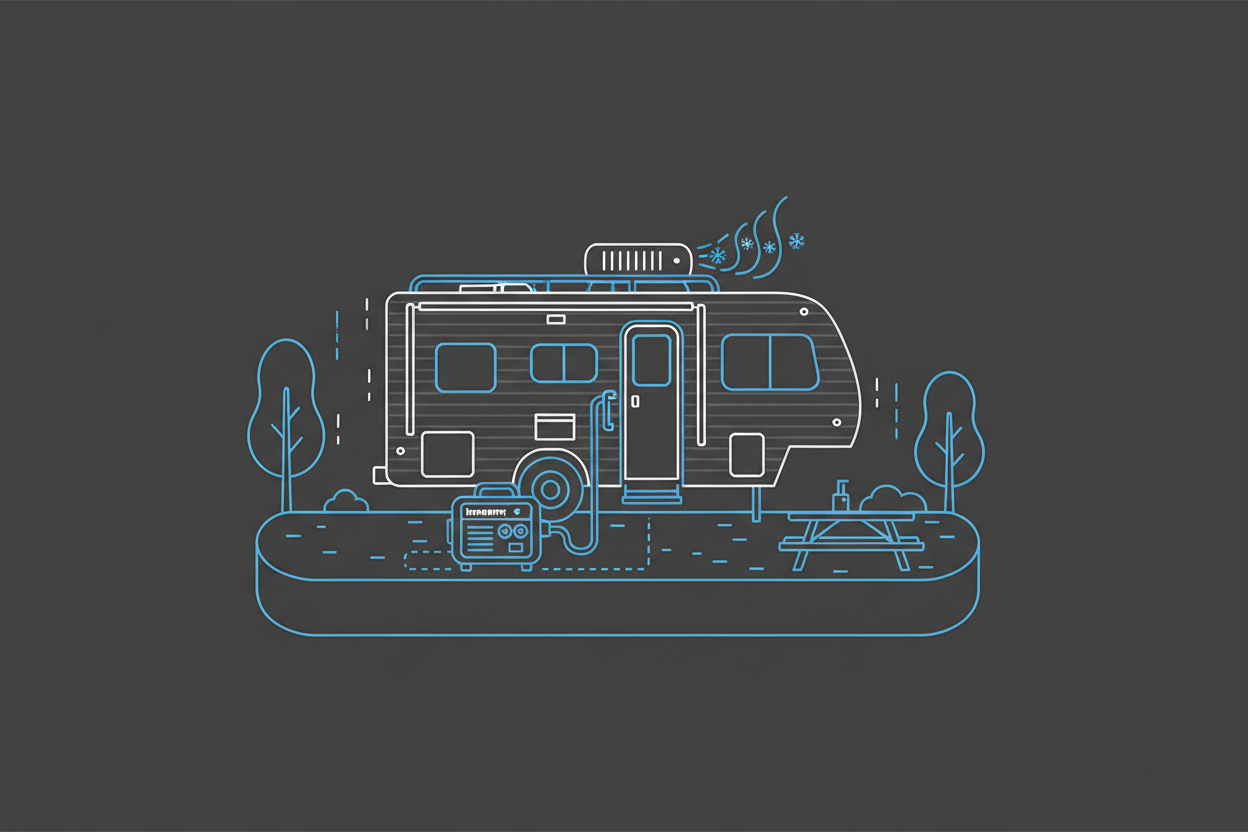RV AC Compatibility: What Generator Size You Need for Reliable Cooling
Running an RV air conditioner is one of the most demanding tasks for a generator. Understanding how AC units draw power helps you choose a generator that can start and run your system without overloads or shutdowns.

How RV Air Conditioners Draw Power
RV AC units use two types of wattage: a high startup surge and a lower continuous running load. Generators must support both values to ensure stable operation.
- Starting watts: temporary surge required to start the compressor
- Running watts: power needed to keep the AC running
A typical 13,500 BTU RV AC requires 1,600–2,200 watts to start and 1,100–1,500 watts to run. These numbers vary based on temperature, age of the AC, and battery charging load inside the RV.
Common RV AC Wattage Ratings
| AC Size | Starting Watts | Running Watts |
|---|---|---|
| 11,000 BTU | 1,300–1,900 | 900–1,300 |
| 13,500 BTU | 1,600–2,200 | 1,100–1,500 |
| 15,000 BTU | 1,800–2,800 | 1,300–1,800 |
Larger AC units require more capacity, especially during hot weather when compressor load increases.
Recommended Generator Sizes for RV AC Units
For 11,000 BTU AC
A 3000–3500 watt inverter generator usually provides enough surge and running capacity for reliable operation.
For 13,500 BTU AC
The most common RV AC size requires a 3500–4500 watt inverter generator to handle surge watts without tripping.
For 15,000 BTU AC
These units often require 4500–6500 watt generators or a parallel setup for consistent performance.
How Soft-Start Modules Improve AC Compatibility
Installing a soft-start module reduces compressor surge wattage. This allows mid-size generators to start larger AC units and improves cooling performance in hot climates.
Other Loads That Affect AC Operation
- Battery chargers inside the RV
- Microwaves and kitchen appliances
- Water pumps
- TV and entertainment systems
Running these devices at the same time increases total wattage and may require a larger generator.
Parallel Generators for Extra AC Capacity
Two parallel-capable inverter generators provide additional surge wattage for AC startup. A pair of 2000W units can often run a 13,500 BTU AC reliably with the right cabling.
Conclusion
RV air conditioners require careful wattage planning. Generator selection should be based on both starting and running loads, plus the additional appliances you plan to use. Matching the right generator size ensures quiet, efficient, and reliable cooling in all conditions.
